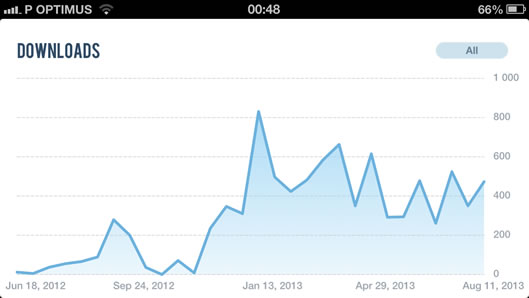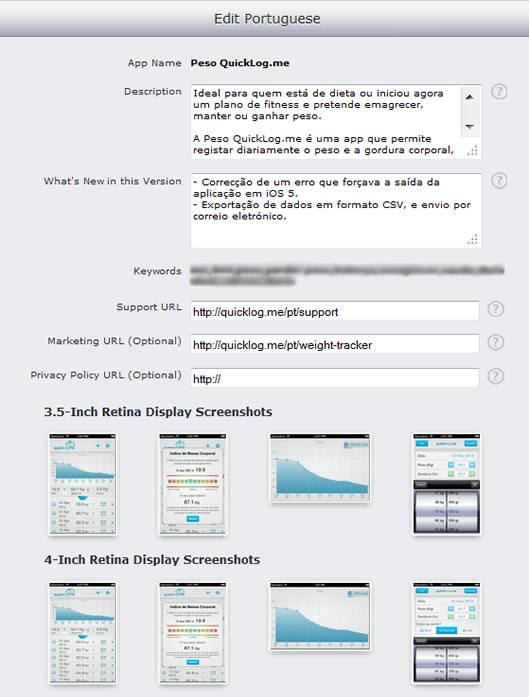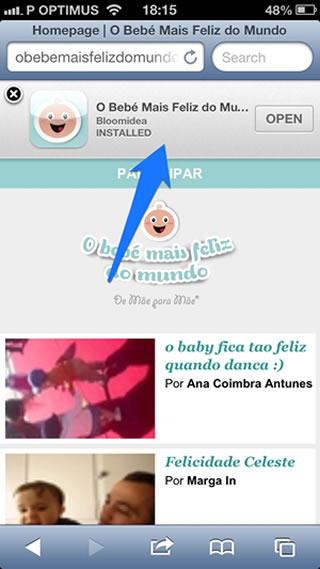App Marketing: how to increase the downloads of your App
The work surrounding your App does not end when it is finally developed and made available for download on the online store of your choice. We can even say that the hard work has only just begun!
With over 2 million Apps available in the two biggest App stores (App Store and Google Play) to choose from, how do you make customers choose yours?

The main platforms for which you can develop your App are the App Store for iOS Apps and Google Play for Android. Although the platforms and the stores are different, the techniques that can be applied to promote the App are very similar and, usually, the only differences arise at the technical level, in terms of implementation, and result in small changes because of the different rules pertaining to each store.
As in any aspect of digital marketing, here too it is essential that our activities and the results that we want to influence are measured: in this case the absolute number of downloads. This is the only way we can identify which techniques were applied that obtained the best results and which ones fell short. All stores offer a set of basic statistics about the App’s performance. Typically, this service only shows the number of downloads per day and country, as well as ratings and comments that users have left. The display of these metrics is not always done in the most intuitive and easy way, enabling you to make the desired analysis. Therefore, I recommend the web service App Annie: even though it is free, it is far superior to the tools available by default in the official stores of the iOS and Android platforms. In addition to the analysis of our App, it also allows the analysis of your competition.
There are many ways that the user can discover your mobile application. According to Forrester, the most popular sources are as follows (percentages for iOS):
- Browsing through the platform’s official store – 63%
- Recommendation from others (word of mouth) – 50%
- Browsing the store’s top Apps – 34%
- Previously installed by the manufacturer on the smartphone – 20%
- Through social networks – 19%
- General Internet browsing – 16%
- Searching via search engines (Google, Bing, etc..) – 14%
- Ads in newspapers or magazines – 7%
- Reading blogs – 7%
- Reading newsletters – 6%
- TV ads – 6%
- Smartphone ads – 6%
- Radio ads – 3%
- Other – 7%
As we can see in the list above, there are several moments where we can directly or indirectly influence the download of the App! While some of these channels require a considerable budget, as is the case of ads on TV, radio, newspapers, magazines and smartphones, there are other channels that have a greater impact and where you do not need a big budget for promotion.
App Store Optimization (ASO)
You can make the greatest impact on the number of downloads of your App starting right at the App store where your App is on display.
The techniques applied in this category are usually known as App Store Optimization (ASO) and they consist in making the App appear on the first place rankings for searches made by users of the App store. Just like SEO, it’s also crucial to know your App’s users/customers so you can identify which keywords are used by them to search for your type of App.
The 7 most important factors in App Store Optimization are:
- App name – This is where the right keyword can make all the difference. It is important that the application name has the keyword that best describes your type of App.
- App keywords – Both stores allow you to indicate a reduced set of keywords to help the App store search engine find that particular App. You should do a keyword analysis and find the ones that are most used by your customers to find Apps within your theme. You should keep optimizing this field, experimenting with new keywords and measuring the impact on the number of downloads.
- Number of downloads – This aspect is, so to speak, recursive, that is, the more downloads the App has, the higher the probability of appearing at the top of the search listings for those keywords. It is a known fact that Apps that make it to the App store tops, see their downloads increase exponentially while they are included in that list.
- Ratings and reviews – This is where, as Milton Hershey said, we can affirm that quality is the best advertising! All the design and development you put into your App will be reflected in the ratings and reviews made by the users who have tried the application. It is known that this factor greatly influences the overall ranking in the App store listings and so it is recommended that you ask the user (non-intrusively) to leave a review at the App store after experimenting with the App.

- App description – In this field, we have the opportunity to enumerate all the App’s features, as well as any awards and other references worth mentioning. It is also another opportunity to add keywords that you may have identified as being relevant.
- App screenshots – This factor alone does not contribute to ranking in the search results, but contributes greatly to its download as soon as the App is in the user’s line of vision. It’s the screenshots that "convince" the user to download: they must exemplify the application’s main views and functions, and may also include instructions on how to use it. Fill in all the available spaces for images, 5 in the Apple Store and 8 in Google.
- App localization – Consists in translating the App and its contents (screenshots, name, description, etc..), adapting the translation to the culture of the country to which it is addressed, considering customs, weight and measurement systems, currency, date and time formats, legislation, as well as any other variables that may affect the product. Usually, companies that localize a version of its existing App in a new country, immediately see the number of downloads increase considerably in that country.

The promotion does not end at the App store, there are many other ways to promote the application through some traditional marketing techniques, as well as others available within digital marketing.
10 forms of promotion outside the app store
There are various promotional activities that, although with less impact than ASO, if applied together, can have very significant results. Here are some ideas:
- App’s website – A site designed exclusively to promote downloads of the web application and that can also serve as a channel for technical support. It should be optimized for search engines (SEO) for the targeted keywords and all link building should be directed to this website. A common mistake in such sites is to not develop the mobile version, although this is one of the most common forms of access. Here is an example of good practices concerning these types of sites.
- Promotion on and through social networks – The App should be promoted among its potential customers and of course on the social networks they use, such as Facebook, Twitter, YouTube, LinkedIn, etc.. The type of communication and presence should be appropriate to the network, because each social network has its own peculiarities. If possible, the App should have social components in its functions, for example, through the simple sharing of a result on Facebook or Twitter or the possibility to invite friends to use the App. Facebook has an advertising option that is specifically geared to promoting the installation of Apps – Mobile App Install Ads.
- Smart App Banners – This is a way of showing the visitor of a website a small banner with the indication that there is an App from that site available for download in the store if the user does not have it installed already. For now, these are only available on iOS, but can easily be implemented with existing plugins for Android.

- CPI Campaigns (Cost-Per-Install) – If the App is paid, you can make it available for free during a short period of time and promote it with the help of services like AppTurbo or AppGratis.
- Press Release – A pretty ordinary form of promotion, but still manages to obtain very positive results because of the "newness" factor associated with Apps. This way, it is possible that general or even specialized media will mention national and/or the coolest Apps on their pages. Some good occasions for sending a press release are when the App reaches the store’s international tops, as well as any significant distinctions or awards.
- Cross promotion in other Apps – If you already have other Apps available, you can use them to promote the download of the new App or use Apps belonging to partners. There are also networks dedicated exclusively to this type of cross promotion between Apps – Cross-promotion networks (CPN) – some are free, while others only offer a paid version. Some examples of these types of networks include TapJoy and Flurry AppCircle.
- Offline Promotion – Participate in fairs or conferences that are relevant to your App’s theme and take advantage of them to get your App noticed, as well as to build partnerships. Whenever you have the possibility of physically promoting the App (magazine, flyer, poster, etc.) always include a QR code with a direct link to download the App.
- Make a video – Videos have a great ability to, in just 30 seconds, exemplify why the App is worth the download. Tell a story and with that story show how the App can solve that problem. Post this video on the App’s website, YouTube, etc...
- Engage bloggers – Introduce your App to the most influential bloggers within the theme of your App. If they like it, they will share it with all their readers and followers on social networks. If the App is paid, give them a coupon for a free trial.
- App Review Sites - Some of these sites can generate many downloads when they do a review that recommends your App. It also serves as a good source of links (Link Building) for the App’s website.
As a last tip, I leave something that cannot be exactly called promotion. It’s something that is already part of the post-sale stage: make the technical support outstanding! Provide all available channels to support your Apps’ users and always be quick and thoughtful when responding. This can make all the difference concerning word of mouth and the reviews that are left at the App store. Above all, aim for happy customers, and if there is something that is already certain, it is that these "new consumers" (of Apps) are very demanding, even with Apps that are downloaded for free ;-)
